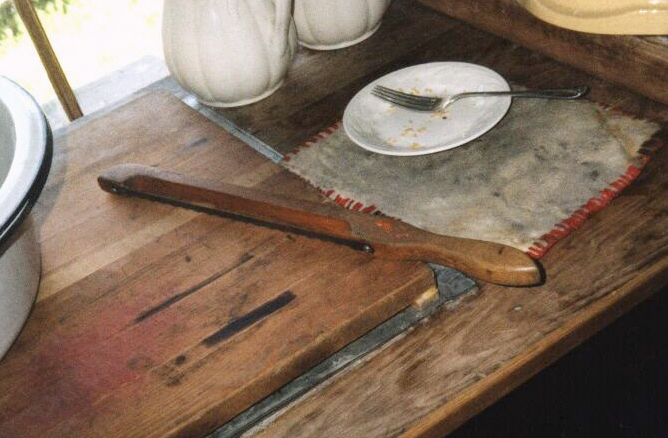 |
hgigous@gmail.com (574) 269 - 1327 |
|
Our History |
|
|
Until the spring of 1981, our family knew absolutely nothing about Shakers, their way of life, their furniture, their oval boxes or the myriad of inventions and activities in which the Shakers were involved. That spring of 1981, our family visited the Old Fort Museum in Fort Wayne, Indiana and on display was a reproduction of a #1 Shaker box. I was intrigued with the symmetry and beauty of the box. Since that time, our family has learned a great deal about the Shakers and their history through reading and visiting the Shaker village sites. I started making Shaker boxes shortly after that visit to the Old Fort Museum. By 1983, our four children were involved in making Shaker boxes and as a family we participated in Civil War Reenactments where we also sold our boxes. In 1995, I took an early retirement from my employment as a high school mathematics teacher and began to make and market Shaker boxes a bit more seriously. Currently my wife and I are the box makers as our four children have all graduated from college and have careers of their own. More recently, in 2001, my wife and I took a road trip to Alaska spending ten weeks traveling to, in and from Alaska. We stopped at nearly every museum on that trip and at the site of a Hudson Bay Trading post in British Columbia we found a most interesting museum. The Canadian government has reconstructed the trading post and has included in that reconstruction a museum with artifacts of the time the trading post was in existence. Among various items of interest we noticed was what appeared to be a commercially-made bread knife. The Canadian government required each person crossing Canada to reach Alaska during the gold rush of 1898 to have enough food for six months. Much of this would be in the form of flour to be made into bread and biscuits. Hence, every miner also carried a knife to cut bread and biscuits and many would have had a bread knife of the style we saw in the museum. A photo of that bread knife is shown below. 
We had seen bread knives of similar design, but as history buffs, learning that this type of bread knife does indeed date to the Alaskan gold rush and earlier here in the lower forty-eight, gave it a whole new meaning to us. With some research we’ve learned everyone prior to 1928 sliced their own bread whether they baked their bread or bought it from a bakery.Otto Frederick Rohwedder began marketing the first automated bread slicer July 7, 1928 enabling bakeries and groceries alike to sell sliced bread. (Now the saying,"That’s the greatest thing since sliced bread" perhaps has more meaning for you.) With the advent of the bread machine, baking bread at home has now grown in popularity. This in turn has prompted people to long for a bread knife that would cut warm bread without smashing, tearing or gouging and at the same time irritating the warm bread lover. We’ve redesigned the handle and incorporated into our bread knife the technology our warm-bread-loving forefathers used in Alaska, in the Midwest and everywhere else prior to 1928 into our bread knife. Our Yukon bread knife remains very functional and has historical significance while at the same time being aesthetically very pleasant to view. Keep your endgate up and your grass-side green, |
|
© 2012 Gigous.com All Rights Reserved. |
|